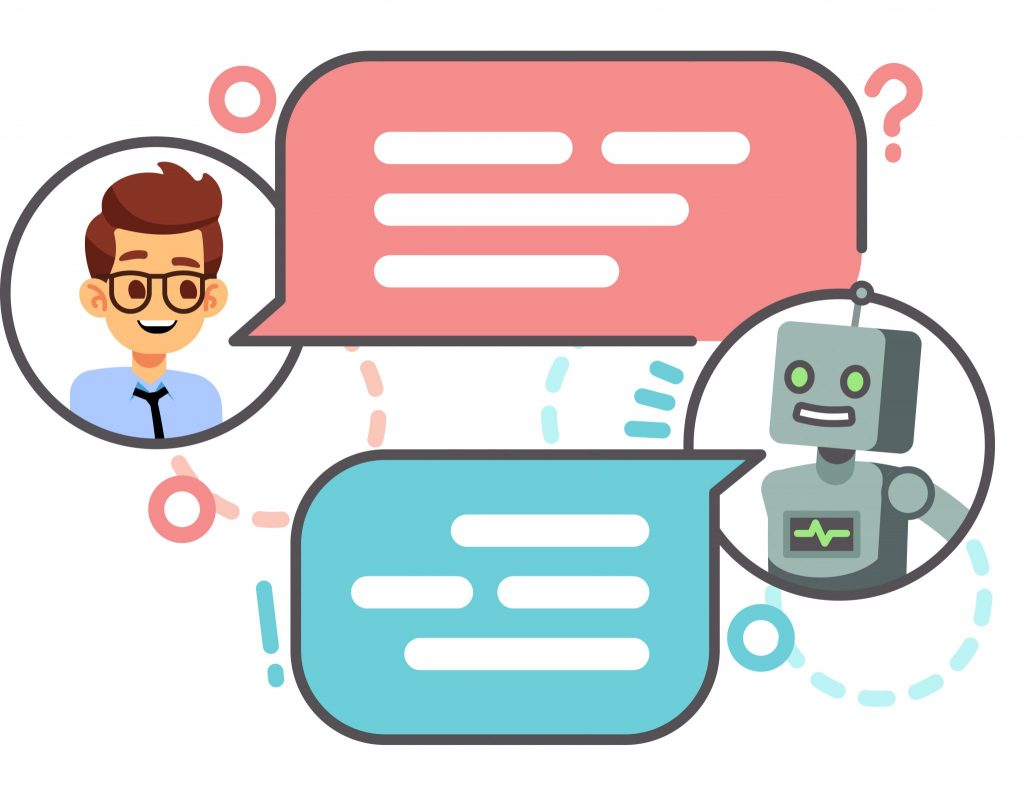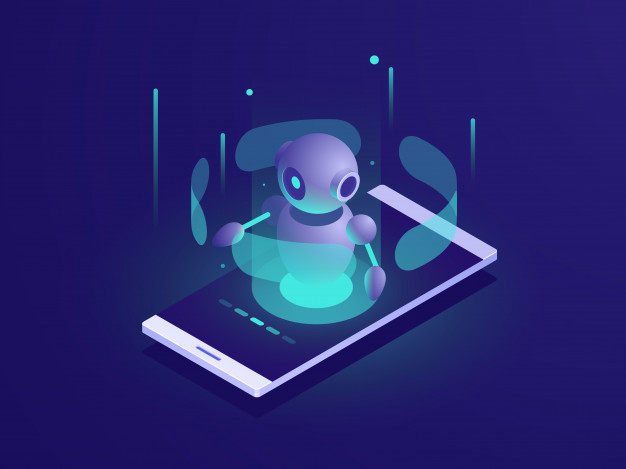The age of talking algorithms has arrived. IT giants like Google, Amazon, and Apple have stunned the world by developing self-service bots that are programmed to answer customer queries, resolve simple to complex issues, and make necessary suggestions as and when required irrespective of device, time, and place. Moreover, the bots are even marching into the territory of humans by interacting with their feelings. These bots are becoming more and more popular, and most industries, such as finance, health care, airline, software, food and restaurants, and entertainment are already disrupted with the use of it. Here are a few bots that have stepped into the world of the Internet and have all-but-eliminated human intervention.
Customer support chatbots

The most common AI-driven application that is widely used by many organizations is the chatbot. It has drastically reduced the pressure off the customer support team and increased availability whenever required, saving the organization’s resources to a great extent. The evolution of chatbots has changed how the agencies operate, be it a government organization, a financial institution, health-care industry, staffing and recruitment industry, or restaurant industry. For example, in government organizations, there are a vast number of public inquiries related to tax filing, legislation, judicial issues, and others that can take days or even weeks to get resolved. Implementing chatbots in such cases brings agility, transparency, and efficiency to serve the public as well as the internal workforce. The simple questions like “How much does it cost to do this?” or “How to raise a complaint if my payment is not processed but is deducted from my bank account?” can be easily answered by chatbots. This can help reduce workload over the supporting staff and enable them to resolve more complicated issues that a bot cannot resolve technically. Chatbots are painless and effective interactions, and many organizations are implementing them and reaping the benefits. Several government agencies have already started using chatbots for their operational tasks, like the City Hall Internet Personality (CHIP) bot used by Los Angeles local government, or the Emma chatbot used by the U.S. Department of Homeland Security for its U.S. Citizenship and Immigration Services.
Health-care bots
Health care is one of the first domains where bots have made a long-lasting impact. The bots come with built-in AI health-care functions, including a fully functional symptom checker, medical content from trusted industry sources, and language-understanding models that are developed to understand medical and clinical terminology. Nowadays, patients want fast and easy access to information and prefer a self-service option, which can make them feel the interactions to be engaging and personal regardless of location, device, or time. Employing bots with multi-channel integration can enhance digital health-care experiences by providing patients with relevant information, resolving issues, and allowing access to health records through a simple interaction in real-time.
The first-ever health-care bot, known as ELIZA, was introduced in the 1960s, and it became famous for its role as a “Rogerian Therapist.” It acted as a therapist and was used to facilitate conversations with the patient. The bot was so convincing that many people mistook it as a real human therapist. Ada is the No. 1 medical app for 130 countries and has carried out over 15 million assessments since its global launch in 2016, according to discover.bot. By having simple follow-up conversations with Ada, you can get an accurate assessment and helpful suggestions for your condition. Such health-care bots can perform a wide variety of tasks, like connecting patients with the correct medical practitioner based on the symptoms observed, handle interruptions and topic changes, answer complex medical questions, and prepare reports that provide a proactive relationship and leads to overall improved health, awareness, and streamlined service.

E-commerce
During online shopping, consumers usually tend to ask questions about products, make comparisons between similar products and brands, and place orders based on their preferences and past experiences. According to a recent survey by e-marketer, U.S. voice-enabled speaker owners are using their speakers for several e-commerce-related activities. These activities included tasks like creating shopping lists or to-do lists and making a purchase via voice-based commands. Several major fashion retailers, including Burberry, Victoria’s Secret, Sephora, Estée Lauder, and Tommy Hilfiger, have adopted interactive chatbots that can talk to their customers in a natural voice as an in-store salesperson would talk. These chatbots can ask customers about their preferences and provide appropriate suggestions for their fashion needs based on those preferences, with a complete range of support for answers to the entire set of FAQ questions, with additional navigation options, videos and on-demand support from human companions.
Besides fashion, several other commercial organizations have started relying on chatbots to accompany their customers in their online shopping experience. Staples, the business essentials and office supplies store, is using a chatbot powered by the IBM Watson platform that could help its customers place orders via voice-based commands. E-commerce giant eBay also developed the ShopBot shopping assistant that can help consumers search for the right products within the desired price ranges and also provide appropriate alerts to customers when an auction of any of their relevant listings is about to end.
Education

In the education sector, several organizations have made progress in using bots. In most cases, it is used for answering the repetitive questions of students, be it related to their course material or for other queries about their college or campus. Such bots are available for students around the clock while reducing the overheads for teachers or administration staff. Each year, when a new batch of students arrive, they face similar queries, and for such scenarios involving frequent and repetitive tasks, artificial intelligence and machine learning fit in well. One such commercially available bot is Botsify, which teachers can use to teach their students via personalized text, images, or videos, and also check their knowledge via quizzes. Similarly, Hubert is an interactive surveying bot for education and customer experience. It can be used for getting feedback from students or customers. Deakin is a voice-controlled digital personal assistant for students that can keep track of learning resources, assignment dates, and schedules for students. Though it would not be correct to say that such bots are superior to the human teachers, the continuous availability of such chatbots makes them ideal supplementary support for the students.
Bots: Speaking to a new world order
Modern bots are not just mathematical algorithm-based workflows meant to automate everyday tasks like performing small domestic chores or playing music on demand. They are now an entirely new breed of self-analyzing and self-correcting entities. The virtual travel assistant Travel Professor can help you plan your entire trip, while Whole Foods Market’s robot chef can help you search for recipes based on simple ingredient related keywords or emojis. The earthquake bot designed by Twitter tweets whenever there is an earthquake over 5.0 observed.
There are already several surgical robots in use that can perform complicated activities like human surgeries. The high cost of surgical robots may be a barrier in their adoption for now, but most hospitals today see it as a worthwhile investment. According to research by marketsandmarkets.com, the global market for surgical robots will experience a compound annual growth rate of 10.4 percent, from $3.9 billion in 2018 to $6.5 billion by 2023. And as the technological ecosystems like machine learning and natural language processing and artificial intelligence improve further, the implementation and effectiveness of such automated bots are going to enhance drastically, unveiling an entirely new world before us.
Featured image: Freepik / upklyak



